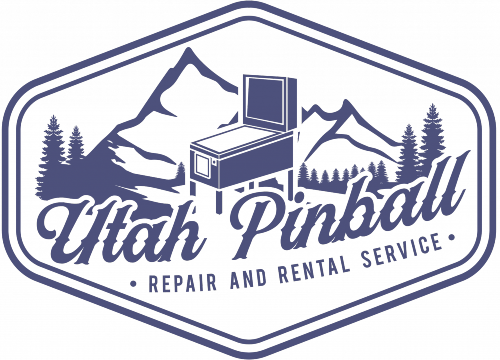Drop targets. Standup targets. Backhand. Skill shot. Soft plunge.
When you ask someone for help with game strategy, it can quickly feel like they’re speaking a whole other language. Let’s define some playfield terms and shooting terms to help you talk the talk of pinball.
Playfield Terms
Let’s start with playfield terms.
A playfield is the play surface of a pinball machine. For example, this is the playfield for Stars:
There are a handful of basic mechanisms that you’ll find on most pinball machines. Each term has a corresponding label on the Stars playfield.
- Flipper(s) – The mechanisms that are controlled by the player to keep the ball in play. They are NOT called flappers, paddles, bumpers, or kickers.
- Slings – The mechanism usually found above the flippers that kicks the ball back into play. (Or sometimes out of play. That’s always a bummer.)
- Orbit – A lane that typically goes completely around the playfield.
- Inlane – A lane that the ball can travel through that keeps the ball in play. Sometimes inlanes will be at the bottom of the playfield and bring the ball directly to the flippers. Inlanes can also be in other areas of the playfield. There is usually also a switch of some kind that provides a reward when the ball passes over it.
- Outlane – A lane that the ball can travel through that brings the ball out of play.
- Drop target (aka “Drops”) – Targets that drop down when struck with the ball. The targets will typically remain down until the entire “bank” of them (all of the drop targets in that row) are lowered. (You can see on Stars that some of the drop targets are up and some are down.)
- Stand up target (aka “stand ups”) – Targets that stay standing no matter if they have been hit or not.
- Spinner – A flat, square piece of material held above the playfield on a hinge. When the ball passes through the spinner, it spins and awards points.
- Pop bumper – A mechanism that fires when the ball comes into contact with it, shooting it back in the opposite direction.
There are also a handful of features that are usually found on more modern games that are worthy of note.
- Ramp – A ramp brings the ball to a different place on the playfield. Sometimes ramps bring the ball back to the flippers, sometimes to another level of the playfield, sometimes to a ball lock mechanism. You can see on Foo Fighters that there are three ramps leading to various parts of the playfield:
- Scoop – A mechanism that holds the ball underneath the playfield for a period of time. The function/benefit of the scoop is dependent on the game. This is an example of the scoop on Guardians of the Galaxy. You can see the lights above it indicate which rewards are possible from the scoop:
- Saucer – A shallow indent in the playfield that the ball can rest in when the ball is shot there. The saucer can provide some kind of reward or serve as the ball lock mechanism depending on the game. After the benefit has been provided, the ball will be kicked out of the saucer. This is an example of a scoop on Trizone:
- Captive ball – A ball that is held “captive” on the playfield. This ball is often used to hit a target elsewhere in its captive area to provide a reward. This is a captive ball on Avengers. When the first ball is struck, the ball behind it moves up the lane and ideally hits the back target to make progress towards a multiball:
Shooting Terms:
Now let’s take a look at some shooting/play terms.
- Soft plunge – When you pull the plunger back less than the maximum amount to achieve a specific shot. For example, you can see Bowen of PAPA soft plunge on White Water in this clip to stay on the upper playfield.
- Hard/full plunge – Pulling the plunger back all the way and letting it rip!
- Backhand – Using a flipper to hit a shot on the same side of the playfield as the flipper. For example, using the left flipper to hit the left ramp on the playfield. In this clip, Joel from Flip N Out backhands an orbit on Venom.
- Nudge – Moving the machine to control the ball and keep it in play. Gentle hitting, slapping, bumping, and moving the machine are allowed in competition. See this clip of Anna from Hot Nudge competing in the INDiSC 2023 Women’s finals for an example.
- Tilt – If you nudge too much, you might tilt. Tilting at minimum results in the loss of control of flippers and the end of your ball. Depending on the game, you could lose your bonus or it could even end your game completely. See this example of a tilt while someone is playing Godzilla.
- House ball – When you plunge a ball into play, but the ball bounces in such a way that you don’t get to flip to keep the ball in play. Yes, it is as brutal as it sounds. See this video of Robert getting three house balls in a row on Blackout. (Ouch.)
The language of pinball is one of the biggest barriers to entry when joining the hobby. These terms are the most common ones you’ll hear, but there are certainly more out there. When someone uses a term you don’t understand, feel free to ask them to clarify or define it. If they’re sharing strategy, they’re already in the mood to help and will likely go the extra mile!
